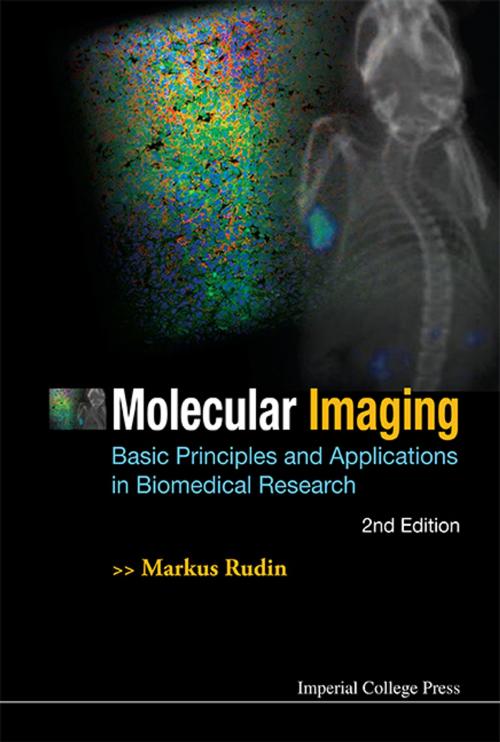Molecular Imaging
Basic Principles and Applications in Biomedical Research
Nonfiction, Science & Nature, Technology, Imaging Systems, Engineering, Health & Well Being, Medical| Author: | Markus Rudin | ISBN: | 9781783263172 |
| Publisher: | World Scientific Publishing Company | Publication: | July 4, 2013 |
| Imprint: | ICP | Language: | English |
| Author: | Markus Rudin |
| ISBN: | 9781783263172 |
| Publisher: | World Scientific Publishing Company |
| Publication: | July 4, 2013 |
| Imprint: | ICP |
| Language: | English |
The area of molecular imaging has matured over the past decade and is still growing rapidly. Many concepts developed for molecular biology and cellular imaging have been successfully translated to in vivo imaging of intact organisms. Molecular imaging enables the study of processes at a molecular level in their full biological context. Due to the high specificity of the molecular readouts the approach bears a high potential for diagnostics. It is fair to say that molecular imaging has become an indispensable tool for biomedical research and drug discovery and development today.
This volume familiarizes the reader with the concepts of imaging and molecular imaging in particular. Basic principles of imaging technologies, reporter moieties for the various imaging modalities, and the design of targeted probes are described in the first part. The second part illustrates how these tools can be used to visualize relevant molecular events in the living organism. Topics covered include the studies of the biodistribution of reporter probes and drugs, visualization of the expression of biomolecules such as receptors and enzymes, and how imaging can be used for analyzing consequences of the interaction of a ligand or a drug with its molecular target by visualizing signal transduction, or assessing the metabolic, physiological, or structural response of the organism studied. The final chapter deals with visualization of cell migration, for example in the context of cell therapies.
The second edition covers novel developments over recent years, in particular regarding imaging technologies (hybrid techniques) and novel reporter concepts. Novel biomedical applications have been included, where appropriate. All the chapters have been thoroughly reworked and the artwork updated.
Contents:
-
Introduction
-
Methodologies:
- Imaging Techniques
- Molecular Reporter Systems, Design of Molecular Imaging Probes
-
Applications:
- Drug Imaging
- Imaging Gene Expression
- Imaging the Function of Gene Products
- Monitoring of Cell Migration
-
Appendices
Readership: Academics (medicine, pharmacology, biomedical technology) and industry (pharmaceutical, diagnostic, biomedical technology).
The area of molecular imaging has matured over the past decade and is still growing rapidly. Many concepts developed for molecular biology and cellular imaging have been successfully translated to in vivo imaging of intact organisms. Molecular imaging enables the study of processes at a molecular level in their full biological context. Due to the high specificity of the molecular readouts the approach bears a high potential for diagnostics. It is fair to say that molecular imaging has become an indispensable tool for biomedical research and drug discovery and development today.
This volume familiarizes the reader with the concepts of imaging and molecular imaging in particular. Basic principles of imaging technologies, reporter moieties for the various imaging modalities, and the design of targeted probes are described in the first part. The second part illustrates how these tools can be used to visualize relevant molecular events in the living organism. Topics covered include the studies of the biodistribution of reporter probes and drugs, visualization of the expression of biomolecules such as receptors and enzymes, and how imaging can be used for analyzing consequences of the interaction of a ligand or a drug with its molecular target by visualizing signal transduction, or assessing the metabolic, physiological, or structural response of the organism studied. The final chapter deals with visualization of cell migration, for example in the context of cell therapies.
The second edition covers novel developments over recent years, in particular regarding imaging technologies (hybrid techniques) and novel reporter concepts. Novel biomedical applications have been included, where appropriate. All the chapters have been thoroughly reworked and the artwork updated.
Contents:
-
Introduction
-
Methodologies:
- Imaging Techniques
- Molecular Reporter Systems, Design of Molecular Imaging Probes
-
Applications:
- Drug Imaging
- Imaging Gene Expression
- Imaging the Function of Gene Products
- Monitoring of Cell Migration
-
Appendices
Readership: Academics (medicine, pharmacology, biomedical technology) and industry (pharmaceutical, diagnostic, biomedical technology).















